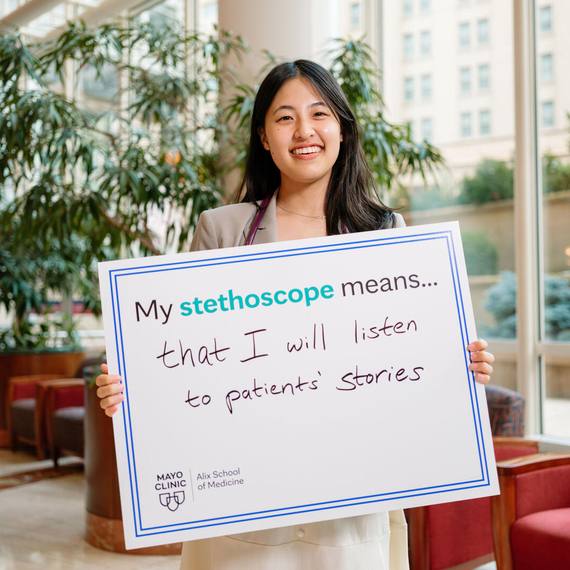-
Arizona couple donates Collaborative Research Building to Mayo Clinic

SCOTTSDALE, Ariz. — Thomas R. and Ruth Ann Hornaday of Paradise Valley, Arizona, have donated the Collaborative Research Building to Mayo Clinic. The 110,000-square-foot biomedical research facility, which opened on Mayo Clinic's Scottsdale campus in 2005, is valued at $64.4 million.
The Collaborative Research Building houses laboratory-based research activity at Mayo Clinic in Arizona. Mayo Clinic researchers, physicians and other investigators are leading the scientific discovery of the mechanisms of human disease, as well as the latest procedures, diagnostics, innovative surgeries and new treatment options to address unmet patient needs.
Tom Hornaday is a partner in two Phoenix-based commercial builder/developer companies: Hornaday Development and Samuelson/Hornaday. Hornaday Development oversaw the planning and construction of the Collaborative Research Building. The project architect was Deutsch Associates. The general contractor was the Weitz Company.
"As a surgical oncologist, I certainly share the Hornadays' passion for advancing new treatments and new cures for cancer. We need the answers today to make a difference for our patients who cannot wait," says Richard Gray, M.D., CEO of Mayo Clinic in Arizona. "Providing the right environment and resources for our physicians and scientists to work collaboratively to bring forward new discoveries is central to success. This gift to Mayo Clinic will house top researchers from Mayo and synergistic partners, enabling work in cancer research and other specialty areas for years to come."
The Collaborative Research Building provides space for research in many areas, including cancer, immunology, neuroscience, allergy, cardiology, endocrinology, transplantation, regenerative medicine and biomedical engineering. Advances in research are made possible through team science, in which clinicians, clinical investigators and discovery scientists discover, translate and apply scientific breakthroughs that accelerate the delivery of lifesaving therapies that defeat rare and complex diseases. This collaborative approach enables Mayo Clinic to lead the advancement of comprehensive patient care.
The Collaborative Research Building also is home to the Arizona Experiential Learning Procedural Skills Lab, Mayo Clinic Graduate School of Biomedical Sciences, and Mayo Clinic Alix School of Medicine — Arizona Campus. Research students seeking a doctorate, or a medical degree and a doctorate, are involved in the research labs in the building.
"Ruth Ann and I have been greatly blessed in our lives. The one great tragedy we suffered was the loss of our beloved daughter to melanoma at age 26 after a three-year battle," says Tom Hornaday. "Instead of letting grief dominate our memory of Kristi, we focus on how fortunate we were to have her as an integral part of our lives for 26 years. We are hopeful that the research conducted in the Mayo Clinic Collaborative Research Building will enable others to evade the trauma of losing a loved one to cancer."
About Mr. and Mrs. Hornaday
Mr. and Mrs. Hornaday have been principal benefactors since 2010. Previous gifts also have supported Mayo Clinic Alix School of Medicine — Arizona Campus. Mr. Hornaday was a member of Mayo Clinic's Arizona Committee of the Leadership Council, a volunteer council of individuals committed to Mayo Clinic’s values, mission, vision, and campaign funding priorities. In addition to the Hornadays' loss of their daughter, Mr. Hornaday lost his mother to breast cancer when he was 19 and she was 52. The future of cancer and genetics research, and collaborative efforts between physicians and research institutions, are areas of special interest to Mr. Hornaday.
###
About Mayo Clinic
Mayo Clinic is a nonprofit organization committed to innovation in clinical practice, education and research, and providing compassion, expertise and answers to everyone who needs healing. Visit the Mayo Clinic News Network for additional Mayo Clinic news.
Media contact:
- Jim McVeigh, Mayo Clinic Public Affairs, newsbureau@mayo.edu







